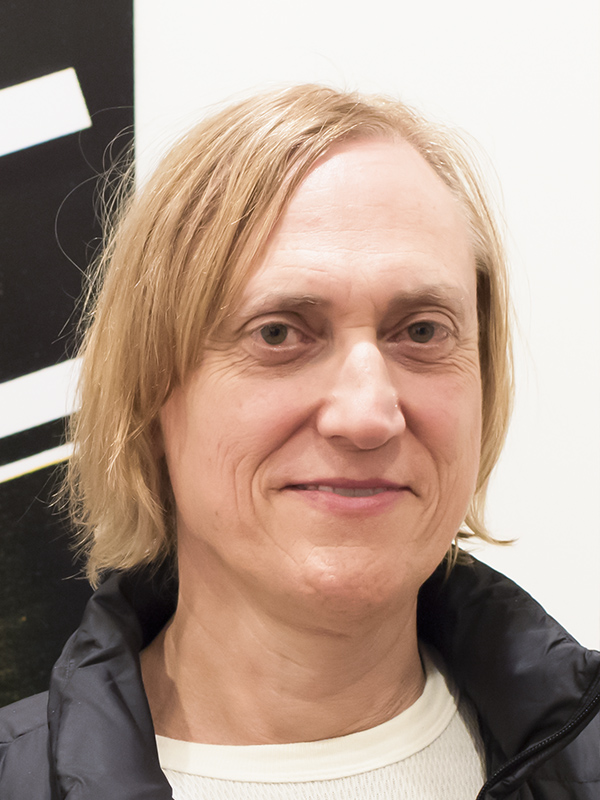* Concert IV – Thursday, January 24, 2019 *
Sonata for Violin and Piano in C major K. 303 – Mozart (1778)
I. Adagio – Allegro Molto – Adagio
II. Tempo di Menuetto
Among the Mannheim sonatas, the Sonata in C major, K. 303, is highly unusual for beginning with an Adagio that seemingly acts like an introduction to the main Allegro Molto, but with the surprise that it is reprised later in the movement. Mozart plays with sonata form in such a way that the different phases of the movement are realised with contrasting tempi. This innovative scheme appealed to Beethoven in his Op. 5 cello sonatas and in later works to come. For the last movement, Mozart opts for something simpler in design: a kind of minuet featuring a charming lyrical melody. There is no sense of strife in the music but instead a kind of beauty and serenity which, like K. 302, closes peacefully in the final bars.
Sonata for Violin and Piano in E minor K. 304 – Mozart (1778)
I. Allegro
II. Tempo di Menuetto
After the cheerful calm of the previous sonata, the next one in E minor will come as a surprise, one brought about by a tragic turn of events in Mozart’s life. Paris was the ultimate destination on Mozart’s 16-month journey away from Salzburg. The idea had been for the young composer to escape the limitations of his provincial hometown and find more prosperous employment in a more important court or city. While Mannheim had proved to be attractive musically, no offers for a job had proved forthcoming. So the plan was that he would continue on from Mannheim without his mother, Anna Maria, who had accompanied him on the first part of his journey. But after getting entangled with a soprano, Aloysia Weber (the sister of his future wife Constanze), he wrote to his father, Leopold, proposing to spend time with the Webers in Italy in search of musical opportunities for both him and Aloysia. Sensing his son’s waywardness, his father angrily replied that he had read Wolfgang’s letter with “stupefaction and horror” and told him “off with you to Paris!” He also decided that Wolfgang could not be trusted so he made the fateful decision to send his (Leopold’s) wife on with him. Son and mother arrived in the French capital in March 1778 and Mozart soon found work composing his Paris Symphony in D, but by the time of its premiere in June of the same year his mother was seriously ill with an undiagnosed illness. By July, she was dead. For the young Mozart, who adored his mother, and also for his father, the turn of events must have been shocking. And so it is with this calamity in mind that one can appreciate the dramatic intensity of the violin sonata in E minor K. 304, the only one cast in a minor key and one of two violin sonatas written in Paris. The mood is also shared by the similarly powerful Piano Sonata No. 8 in A minor written around the same time.
The first movement of the E minor Sonata begins with the violin and the piano stating the opening theme starkly, together without any underlying harmonies. The music soon fills out and occasionally modulates into the major mode but there is a strong gravitational pull always to the minor. The second movement, which, as in the previous sonata K. 303 is marked “Tempo di Menuetto,” starts with a sombre melody that Mozart brilliantly contrasts with an exquisitely tender central section in E major. The sombreness returns, complete with a coda where the melody becomes fragmented, punctuated by frequent rests, until a few energetic bars provide the final closure. The dark tonality, arising in the wake of his mother’s tragic death, imbues this work with an unusual level of emotional turmoil, so much so that Mozart’s biographer Alfred Einstein described it as “one of the miracles among Mozart’s works.”
Sonata No. 3 for Violin and Piano in E flat major Op. 12 No. 3 – Beethoven (1797-8)
I. Allegro con spirito
II. Adagio con molta espressione
III. Rondo: Allegro molto
Beethoven’s final violin sonata in the Op. 12 trilogy is the grandest and most majestic of these early works. It is also the most difficult with an especially brilliant and difficult part for the piano. It begins with a brief downward arpeggio in the tonic key of E flat that acts as a kind of seed from which the rest of the movement evolves. What follows is a lively dialog between violin and piano in which each instrument incites the other to new acts. Syncopations and sudden changes in dynamics enrich the irrepressible sense of drive and playfulness.
The slow movement is the first true Adagio in Beethoven’s violin sonatas and with the additional marking con molto espressione, it is clear that this C major movement forms the emotional core of the work. One particular feature is the use of an arpeggiated accompaniment figure in the piano and then the violin that sounds almost like a reference to Bach’s famous first Prelude from the Well-Tempered Klavier. Towards the end of the movement just before an abrupt fortissimo declamation by both violin and piano, there is also a hint of a harmonic transition which Beethoven later used in the concluding bars of the slow movement of the Waldstein Piano Sonata The finale is a jaunty Mozartian Rondo that makes for lively conclusion to the set of three sonatas.

Euna Kim, violin | Cindy Ho, piano

Evelyn Chang, piano | Kitty Cheung, violin
* Concert V – Thursday, February 28, 2019 *
Sonata for Violin and Piano in A major K. 305 – Mozart (1778)
I. Allegro di molto
II. Tema con variazioni. Andante grazioso
As the penultimate violin sonata of all published in 1778, the A major Sonata K. 305 was probably written mostly in Mannheim before the death of Mozart’s mother in Paris. There is certainly no sign of the emotional turmoil in K. 304. Mozart’s biographer Alfred Einstein describes K. 305 as a “social” duet, full of “cheerfulness, freshness and innocence”. Ironically, the opening movement begins like the E minor sonata with both instruments stating the theme in unison but what different emotional landscapes these two sonatas occupy! The ebullient A major sonority and lively vigour of the rhythms are as infectious as it is cheerful. In another unusual departure, the second movement features a theme and a set of variations. Curiously, while Mozart had done much in this set of six sonatas (K. 301 – 306) to put violin and piano on a more equal footing, this movement seems to be something of a step backwards, with the theme played by the piano and the violin left in the role of accompanying – in fact, the entire first variation is reserved for piano solo. Nevertheless, the violin gets a chance to lead in the second variation and is awarded a moment of special lyrical glory in the fourth. There is a contrasting period of darkness in the minor mode fifth variation but the sixth and last variation restores the happy mood, bringing a joyful conclusion.
Sonata for Violin and Piano in D major K. 306 – Mozart (1778)
I. Allegro con spirito
II. Andantino cantabile
III. Allegretto
The last of the set of violin sonatas Mozart wrote on his journey to Mannheim and Paris, this is the grandest of them all, being the only one in three movements apart from K. 296 (written in Mannheim but not published as part of the set of six sonatas K. 301 – 306). This sonata was probably begun in Mannheim and completed in the summer of 1778 while Mozart was in Paris. Its spirit shows little evidence of what the composer must have felt about his circumstances. His mother had died suddenly and unexpectedly in July of that year while in Paris and Mozart himself wrote to his father about the terrible conditions in that city: “…really the mud in Paris is beyond all description. To go in a carriage entails spending four or five livres a day, and all for nothing; it is true the people say all kinds of civil things, but there it ends… the French are far from being as polite as they were fifteen years ago; their manner borders on rudeness, and they are odiously self-sufficient…”
Written in almost a concertante style, the work’s first two movements set a new standard in soloistic power and poise: a lively opening movement makes way for a breathtakingly intimate Andantino. But it is in the last movement that Mozart really unleashes his creative powers with alternating interludes of different tempi and, in a brilliantly operatic touch, a written out cadenza for both instruments at the end of the movement bringing the work to its dramatic climax.
Sonata No. 4 for Violin and Piano in A minor Op. 23 – Beethoven (1800-1)
I. Presto
II. Andante scherzoso, più allegretto
III. Allegro molto
Being one of the only two violin sonatas that Beethoven composed in a minor key (along with the tempestuous sonata in C minor), this sonata and the famous “Spring” Sonata Op. 24 were both written between 1800 and 1801. Originally they were to be published as a pair under the same opus number but owing to a snafu in which each sonata was printed on different sized paper, they were published instead with consecutive opus numbers. Despite the contemporaneous dates in composition, the mood of this sonata is worlds apart from the Spring. In the words of Beethoven’s biographer Lewis Lockwood, Op. 23 “is bleak, odd, and distant, a neglected child in the family of Beethoven violin sonatas, despite its original and experimental moments.” The sonata was, nevertheless, better received by music critics in Beethoven’s time than his first three sonatas and Abram Loft, in his book on violin and piano duo repertoire, remarks: “In no other Beethoven sonata will the duo find a greater challenge to its sense of drama, of timing, of musical repartee.”
The sonata opens unusually with a dramatic Presto cast in 6/8 time and features no real respite from the minor key tonality even among the later themes the movement explores. There is an unsettled driving energy to this movement that occasionally subsides but without any sense of resolution, a pattern reinforced in its tentative conclusion. The second movement is a slow scherzo that features a remarkably playful, perhaps even comical dialogue between violin and piano. A contrasting fugal section announced by the piano’s octave leap with a concluding trill forms a trio of sorts. A mood of nervous relentlessness returns in the rondo finale although there are two contrasting chordal episodes that stand out for their lyrical sweetness. After a particularly strident fortissimo section punctuated with sforzandos, the sonata’s dark credentials are firmly secured by a sense of exhaustion with a final fade out to black at the conclusion.
* Concert VI – Thursday, March 21, 2019 *
Sonata for Violin and Piano in F major K. 376 – Mozart (1781)
I. Allegro
II. Andante
III. Rondo. Allegretto grazioso
Mozart’s tour of Mannheim and Paris of 1777-8 was, all told, an unmitigated disaster: his mother died, he received no lasting offers of employment and his attempts to rekindle his relationship with soprano Aloysia Weber that began in Mannheim were rebuffed on his return journey. His return to his hometown of Salzburg must have been a huge let down. For a while he tried to make the best of things and even though his father had negotiated a better position for his son as court organist, he remained very dissatisfied with his employment there. After a successful premiere of his opera Idomeneo in Munich in 1781, he was requested to come to Vienna by his Salzburg employer, the Archbishop Hieronymus Colloredo, but only as part of the entourage of servants. The purpose of the Archbishop’s visit was to attend the celebrations for the accession of Joseph II to the Austrian throne. Mozart had bigger ideas and sought to meet the Emperor in the hope of better employment in Vienna. Colloredo’s attempts to block Mozart from performing outside his own circle included a chance to play before the Emperor for a fee equal to half of his yearly Salzburg salary. Infuriated, Mozart brought things to a head in May when he tried to resign but was initially refused. To make matters worse his father sided with the Archbishop imploring Wolfgang to reconcile with the Archbishop. The final ignominious end came the following month when the composer was dismissed literally “with a kick in the arse”, administered by the archbishop’s steward. Against his father’s wishes, Mozart decided to settle in Vienna as a freelance performer and composer and was finally freed from the tyranny of the two overbearing forces in his life: the Archbishop and his father.
The Sonata in F K. 376 was composed in Vienna during the summer of 1781, just weeks after Mozart settled in the Viennese capital. Amazingly, little is evident of the incredible drama of these events in the good humour and brilliance encapsulated in this work. Mozart now chose to abandon the two-movement form of many of his earlier sonatas and fully adopted the three-movement form starting with a dynamic Allegro, continuing with a delicately flowing Andante, and concluding with a graceful Rondo.
Sonata for Violin and Piano in F major K. 377 – Mozart (1781)
I. Allegro
II. Theme with 6 Variations. Andante
III. Tempo di Menuetto
The Sonata K. 377 was also written in the summer of 1781 after Mozart’s arrival in Vienna around the same time as K. 376, and while it shares the same key of F major and a three movement form, it is rather different in mood. The opening Allegro while still good-humoured, has an agitated quality. The slow movement variations in D minor tread darker waters, especially with the mysterious closing variation titled Siciliana that Mozart’s biographer Ivor Keys suggests was a jumping off point for the corresponding deeply affected movement in the D minor string quartet K. 421 written two years later. The last movement marked Tempo di Menuetto is a quietly reflective rondo that makes some at times semi-improvisational excursions but always returns to the graceful and tender opening idea.
Sonata No. 5 for Violin and Piano in F major Op. 24 “Spring” – Beethoven (1801)
I. Allegro
II. Adagio molto espressivo
III. Scherzo: Allegro molto
IV. Rondo: Allegro ma non troppo
It is not clear exactly who nicknamed Beethoven’s violin sonata Op. 24 the “Spring Sonata” but we know it was not the composer, who was also not responsible for the names “Moonlight” and “Pathétique” applied to his two most famous piano sonatas. The moniker seems to have arisen after Beethoven’s death but it aptly describes the sunny melodic complexion of this work. Beethoven dedicated this sonata to one of his patrons in Vienna, Count Moritz von Fries, to whom he also dedicated the string quintet written in this same year (1801) and his Symphony No. 7.
This sonata was his first to be written in four movements, following an expanded symphonic template he had already pioneered in his piano sonatas. In the opening of the sonata, the violin presents the main theme, a beautiful and sinuous locution for which the sonata is famous. After a tender and highly expressive slow movement, Beethoven offers a scherzo that is as short as it is witty. What is particularly notable is the playful way that the main theme presented by the piano is echoed by the violin, which constantly seems to be one step behind. The last movement Rondo opens with another lyrical and highly memorable melody that no doubt partly explains why this is Beethoven’s most popular of the ten sonatas he wrote for the two instruments.
* Concert VII – Thursday, April 11, 2019 *
Sonata for Violin and Piano in B flat major K. 378 – Mozart (1779)
I. Allegro moderato
II. Andantino sostenuto e cantabile
III. Rondeau: Allegro
Despite the numbering, K. 378 was composed before the two F major sonatas, K. 376-7 and before Mozart arrived in Vienna, most likely while Mozart was still in Salzburg in 1779. The opening movement begins with a spaciously attractive melody that Mozart develops in typically inventive ways. The violin introduces a second theme tinged with minor harmonies that foreshadow the troubled mood of the development section in which the piano articulates a melancholy new theme that is soon passed to the violin. The movement is full of teasing interplay between the two instruments that, as one commentator put it, is like “kittens chasing one another.” The slow movement begins with the piano taking the thematic lead before the violin takes command in the central section. The two instruments interchange roles in a reprise of the opening idea. The final Rondeau, has a spelling which perhaps points to the French influence in this movement with its jaunty rhythm of three beats in a bar. After a G minor episode, there is a surprise change in meter to a rapid triplet passage that has four beats per bar before the return of the opening theme where keyboard and violin unite forces in bringing the work to a satisfying close.
Sonata for Violin and Piano in G major K. 379 – Mozart (1781)
I. Adagio – Allegro
II. Theme: Andantino cantabile, with 5 variations. Allegretto (Thema da capo – Coda)
In the famous 1984 multi-Oscar winning movie, Amadeus, Mozart is depicted as almost effortlessly gifted and creative, eliciting profound jealousy and near hatred by his rival Antonio Salieri who has to work much harder for comparatively pedestrian results. While the movie is in many ways a work of fiction, with many plot points made up, it contains some key truisms about the great composer. A wonderful example is to be found in a letter of 1781 written by Mozart from his new home city of Vienna to his father:
“Today we had – I’m writing this at eleven o’clock at night – a concert, where three of my pieces were performed. New ones, of course: a rondo for a concerto for Brunetti, a sonata with violin accompaniment for myself, which I composed last night between eleven and twelve but in order to be able to finish it, I only wrote out the accompaniment and retained my own part in my head; and finally a rondo for Ceccarelli, which we had to repeat.”
Mozart’s partners in this concert were violinist Antonio Brunetti, concertmaster of the Salzburg court orchestra, and the castrato singer Francesco Ceccarelli. The second work he refers to that was written between “eleven and twelve o’clock” was the Sonata in G major K. 379. Because the part Mozart wrote out for Brunetti survived, we know the work underwent substantial revision before it was published. So as lesser mortals, we can take some comfort in knowing that the final product took a little longer than an hour to write! Even so, this anecdotal gem attests to Mozart’s extraordinary facility in being able to mint superbly crafted works at lightning speed.
While the sonata is scored in only two movements, this sonata has the feeling of being in three because of the introductory Adagio, a lyrically grand statement on the piano, which after a pregnant pause the violin reiterates in similarly declamatory style. While the overall key of the work is G major, the Allegro that follows is in G minor, a key that for Mozart we associate with some of his most impassioned music – the G minor String Quintet and the Symphony No. 40 being good examples. The drama of this movement is no less riveting and one’s only regret is that it does not last longer. The second movement is in form of theme and variations and while the theme is rather simple and tender, the variations that follow are exquisitely elaborate, particularly in the piano ornamentation, and yet still quietly eloquent in their restraint.
Sonata for Violin and Piano in A Major Op. 30 No. 1 – Beethoven (1802)
I. Allegro
II. Adagio molto espressivo
III. Allegretto con variazioni
The sixth of the Beethoven’s ten violin sonatas and the first of a set of three published as Op. 30, this sonata stands in the shadow of the thunderous C minor sonata that came after it, which partly accounts for why it is played far less often in concert halls than some of Beethoven’s other violin sonatas. Yet it is still a magnificent work – one that emerged at around the same time as the Eroica symphony and as part of a new direction in his overall approach to writing sonatas. One possible reason for its lack of popularity is that it eschews the drama of some of the other sonatas but favours instead elegance, poise, and subtlety. Although a middle period work, this sonata is not stamped with Beethoven’s “heroic” style but instead with a tender lyricism. The opening theme has a catchy little hook but it’s the second theme that stands out for its beauty resembling an Italian aria.
The second slow movement is also an exquisite gem. The violinist Max Rostal declared that it “belongs among the most beautiful and moving things that have ever been expressed in music… It is a deeply serious and moving confession, the end of which equals late Beethoven in its rapture.” The original rondo finale Beethoven composed for this sonata he decided was too brilliant to be in keeping with the rest of the work’s more subdued pastoral quality, so he later transplanted it to the finale of the Kreutzer Sonata – an exchange conveniently facilitated by the fact that both sonatas were in A major. To fill the void, he wrote a theme and a set variations for this work. While not as adventurous as Beethoven’s later essays in variation form, this movement still contains hints of those ingredients to come including fugato elements in the third variation and portentous dark clouds on the horizon towards the end of minore fifth variation. The last variation dispatches any lingering darkness, however, with gaiety and affirmation.

About the author: Julian Brown is a writer and violinist based in Mountain View, California. Born in the UK, he lived for many years in London and has performed in both London and the San Francisco Bay Area. He is the co-founder of the Cal Arte Ensemble, which performs numerous chamber concerts a year in the Bay Area, aiming to make great music available to a wider audience. He also serves as concertmaster for several orchestras including the Cambrian Symphony and the Palo Alto Philharmonic. For more information see https://www.julianbrown.xyz.

